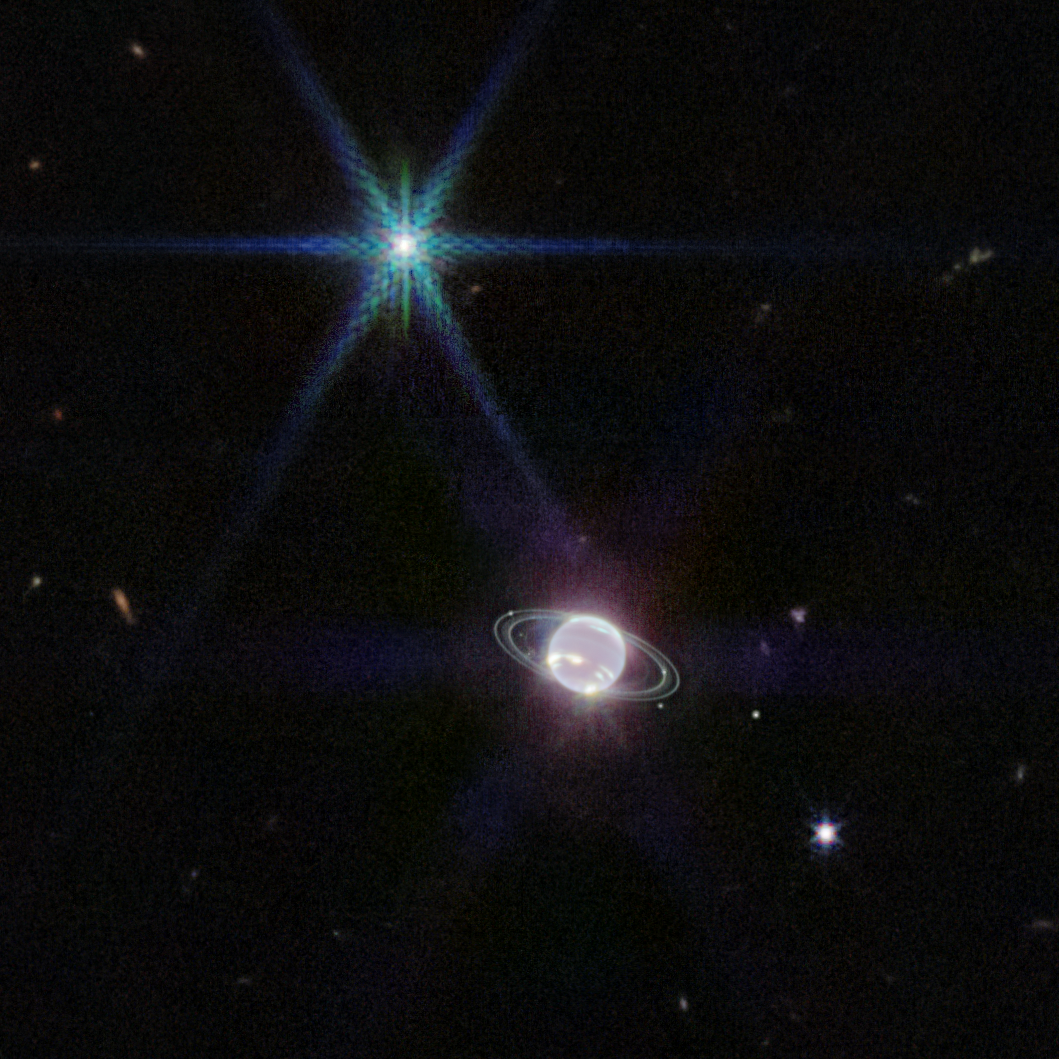2023年8月19日
Ringed Ice Giant Neptune
Image Credit: NASA, ESA, CSA, STScI, NIRCam
Explanation: Ringed ice giant Neptune lies near the center of this sharp near-infrared image from the James Webb Space Telescope. The dim and distant world is the farthest planet from the Sun, about 30 times farther away than planet Earth. But in the stunning Webb view, the planet’s dark and ghostly appearance is due to atmospheric methane that absorbs infrared light. High altitude clouds that reach above most of Neptune’s absorbing methane easily stand out in the image though. Coated with frozen nitrogen, Neptune’s largest moon Triton is brighter than Neptune in reflected sunlight, seen at the upper left sporting the Webb telescope’s characteristic diffraction spikes. Including Triton, seven of Neptune’s 14 known moons can be identified in the field of view. Neptune’s faint rings are striking in this space-based planetary portrait. Details of the complex ring system are seen here for the first time since Neptune was visited by the Voyager 2 spacecraft in August 1989.
Tomorrow’s picture: long cloud
海王星:带环冰质巨行星
影像提供: NASA, ESA, CSA, STScI, NIRCam
说明: 在这幅由韦伯太空望远镜所拍摄的清晰近红光影像里,带环冰质巨行星─海王星位于影像的中心附近。这颗昏暗的天体是离太阳最遥远的行星,与太阳的距离大约为地球的30倍。而在这幅令人赞叹的韦伯影像里,这颗行星之所以会有黝黑幽灵般的外观,则是因为它大气中的甲烷吸收红外光所致。此外,在这幅影像里,伸展到海王星高吸收甲烷上方的高层云清楚可辨。影像中,位在左上方、包裹着氮冰、比海王星要明亮的海王星最大卫星海卫一,周围带着韦伯望远镜特征性的衍射芒。在这片视野里,包括海卫一在内共可辨认出海王星14颗已知卫星中的7颗。在这张摄于太空的行星新影像里,海王星暗淡的行星环格外引人注目。自1989年8月旅行者2号航天器造访海王星以来,这是首次再见到了海王星复杂环系的细节。
明日的图片: long cloud



